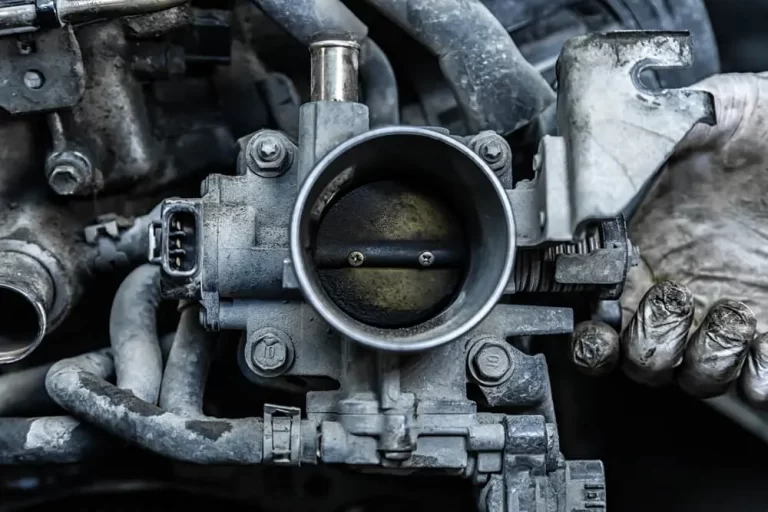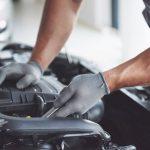Keeping a vehicle’s throttle body clean is critical to the stability of the engine, its fuel economy, how well the vehicle accelerates, and other functions. Using a brake cleaner to clean the throttle body is a bad idea, especially if the cleaner is not non-chlorinated.
Can I use a brake cleaner to clean the throttle body?
If there is no other cleaner to use a throttle body, then you can use a brake cleaner. But the brake cleaner needs to be non-chlorinated. If the brake cleaner is not non-chlorinated, then you should not use it.
Brake cleaners should only be used as a last resort. If there is nothing else in your garage that you can use to clean the throttle and you can’t get to an automotive shop, then you can use non-chlorinated brake cleaner.
The main reason why brake cleaner should not be used to clean a vehicle’s throttle body is due to its extreme combustibility. If the wrong type of brake cleaner is used, the throttle body will be coated in a chemical that is prone to bursting into flames.
If you do not use a non-chlorinated or non-chemical brake cleaner, then the chemical brake cleaner can permanently ruin the sensors located around the throttle.
Another reason why you should only use non-chlorinated brake cleaner to clean a vehicle’s throttle body is the rubber tubing in the area around the throttle could get damaged.
Can I clean my vehicle’s throttle body by myself?
Cleaning the throttle body is not a project that should be done by someone who does not have experience taking apart and working with the engine. It is much more complicated than doing your own oil change.
If just looking at your engine makes you dizzy and confused, take your vehicle to a mechanic and ask them to clean the throttle body. It will cost you, but at least you will know it is done the right way.
If you do have experience and know your way around an engine, then you may be able to clean your vehicle’s throttle body.
Here is the basic method for cleaning a throttle body:
- First, take the air duct connection and remove it from the throttle body.
- After the air duct is removed, find any electrical connections and vacuum lines and remove them as well.
- Now it is time to find the throttle cables. Once they are found, take the throttle plate and rotate it.
- Then take the throttle cleaner, or in this case the brake cleaner, and spray it inside of the throttle body
- Do not spray too much or the cleaner will begin to pool. If you find that the spray is not drying fast enough, you can spray compressed air into or around the throttle body. The air spray will dry the solution faster
- Now rotate the throttle body back in its original position, connect to the electrical connections and vacuum lines, and then replace the air ducts.
For most vehicles, you should not need to remove the throttle body from the engine to clean it.
Take a picture of the exposed throttle body with all of the connections and vacuum lines still attached to it. That way, you can use the photo for reference when you have to put all the connections and limes back.
How often should I clean the throttle body?
Cleaning the throttle body is not a common task that you or your mechanic will have to do every couple of months. Even if you drive 60 miles a day every day of the year, you won’t have to clean your vehicle’s throttle body until the 4th year of driving.
Most mechanics and vehicle maintenance sites advise vehicle owners to clean the throttle body every 60,000 to 80,000 miles.
If you put 15,000 miles on your vehicle every year, you won’t have to clean the throttle body for 5 years.
Some vehicles require that the throttle body be cleaned sooner or later than the general recommended mileage. To find out the right mileage for your vehicle, you can check the owner’s manual or email the manufacturer. In the email, you must include the average yearly mileage, make, model, and year of the vehicle.
What else can be used to clean the throttle body?
First, if you want to clean your vehicle’s throttle body properly, then you should use throttle body cleaning products. Here are a few well-reviewed cleaning products that are inexpensive.
- Berryman Chemtool Carburetor, Choke and Throttle Body Cleaner
- CRC 05078 Throttle Body and Air-Intake Cleaner
- WD-40 – 300134 Specialist Carb/Throttle Body & Parts Cleaner
If you do not have a specialized throttle body cleaner, then there are other substances that are able to clean the throttle body.
- Most products labeled Air Intake Cleaner
- Carb Cleaners
- Motor oil and scrubbers
Try not to use anything other than the cleaners recommended above. If you use the wrong cleaner on your vehicle’s throttle body, you could set fire to the engine.
Signs of a dirty throttle body
There are 4 major signs that will help you recognize it is time to clean your vehicle’s throttle body.
- You are no longer going as far as you should go on a tank of gas.
- Your vehicle stalls when it comes to a stop
- When accelerating, the increase is choppy and uneven
- Your vehicle’s check engine light flashes constantly
The signs above could also indicate that there is a different problem. The best way to verify if there is an issue with the throttle body is by accessing your vehicle’s computer and checking the information from the sensors.
Many sensors are placed strategically around the engine and there are several around the throttle body. Your mechanic will be able to use their diagnostic tools to discover the true issue.
Conclusion
If you have to use a brake cleaner to clean your throttle body, you should only use a non-chlorinated brake cleaner and only as a last resort. If you do not use non-chlorinated or non-chemical brake cleaner, the throttle body could burst into flames. If your vehicle does not accelerate evenly or the check engine light flashes, then the throttle body may be filthy and in need of cleaning.



